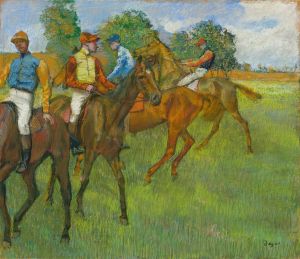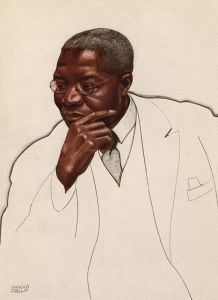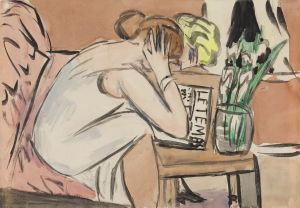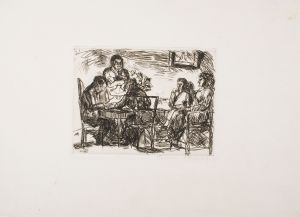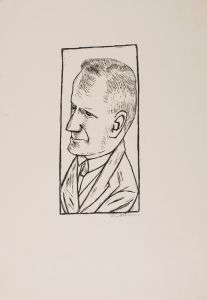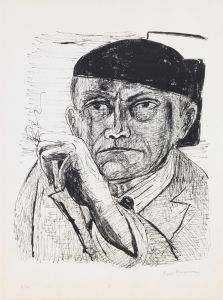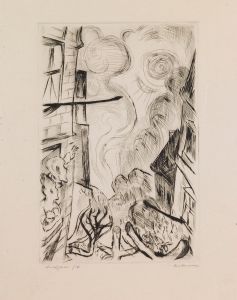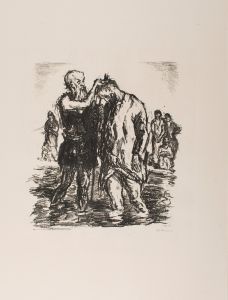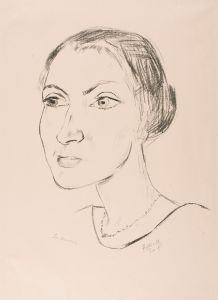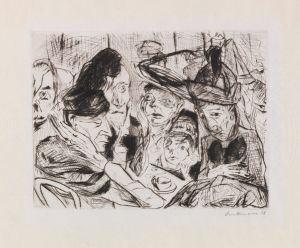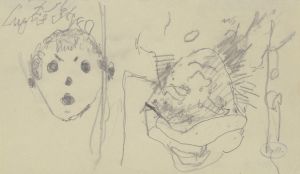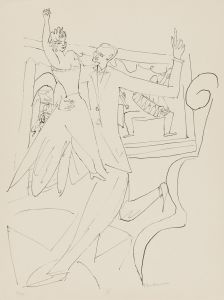
The Negro, plate 6 from the portfolio ‘Annual Fair’
A hand-painted replica of Max Beckmann’s masterpiece The Negro, plate 6 from the portfolio ‘Annual Fair’, meticulously crafted by professional artists to capture the true essence of the original. Each piece is created with museum-quality canvas and rare mineral pigments, carefully painted by experienced artists with delicate brushstrokes and rich, layered colors to perfectly recreate the texture of the original artwork. Unlike machine-printed reproductions, this hand-painted version brings the painting to life, infused with the artist’s emotions and skill in every stroke. Whether for personal collection or home decoration, it instantly elevates the artistic atmosphere of any space.
Max Beckmann was a German painter, draftsman, printmaker, and sculptor, known for his distinctive style that combined elements of Expressionism, New Objectivity, and a personal form of realism. His works often reflect the tumultuous socio-political landscape of early 20th-century Europe, exploring themes of human suffering, existential dread, and the complexities of modern life.
"The Negro, plate 6 from the portfolio ‘Annual Fair’" is one of Beckmann's works that exemplifies his unique approach to art. This piece is part of a larger portfolio titled "Annual Fair" (Jahrmarkt), which was created in 1921. The portfolio consists of ten lithographs that depict scenes from a fairground, capturing the vibrant, chaotic, and sometimes unsettling atmosphere of such events. Beckmann's interest in the fairground as a subject can be linked to its representation of the human condition, with its mix of joy, absurdity, and underlying darkness.
In "The Negro," Beckmann presents a figure that is both striking and enigmatic. The portrayal is characteristic of Beckmann's style, with bold lines and a strong sense of form. The figure is depicted in a way that emphasizes its presence and individuality, yet it also invites viewers to ponder the broader social and cultural implications of the image. The title itself, "The Negro," reflects the period's terminology and may evoke discussions about race and representation in art.
Beckmann's work during this time was heavily influenced by the aftermath of World War I and the Weimar Republic's cultural milieu. The war had a profound impact on him, both personally and artistically, leading to a shift in his work towards more introspective and critical themes. The "Annual Fair" portfolio, including "The Negro," can be seen as a reflection of the societal changes and tensions of the era, encapsulating the sense of disillusionment and search for meaning that characterized the post-war period.
The lithographs in the "Annual Fair" series are notable for their technical execution and the way they convey complex narratives through imagery. Beckmann's use of lithography allowed him to experiment with texture and contrast, creating works that are visually striking and rich in detail. Each piece in the portfolio, including "The Negro," stands as an individual work of art while also contributing to the overarching theme of the series.
Max Beckmann's legacy as an artist is marked by his ability to capture the essence of his time through a unique visual language. His works continue to be studied and appreciated for their depth, emotional intensity, and the way they challenge viewers to engage with the world around them. "The Negro, plate 6 from the portfolio ‘Annual Fair’" remains an important part of Beckmann's oeuvre, offering insight into his artistic vision and the historical context in which he worked.







